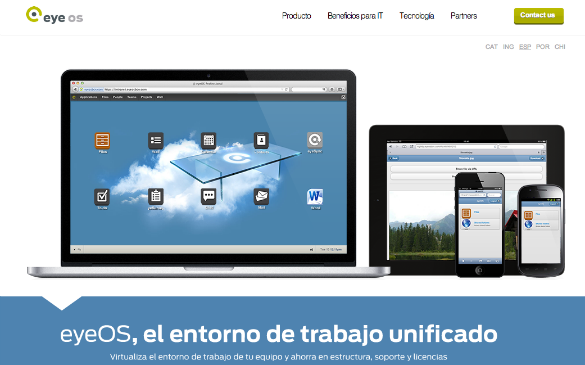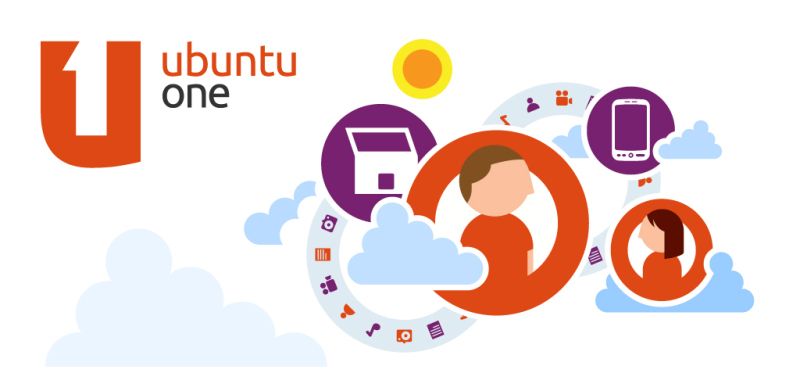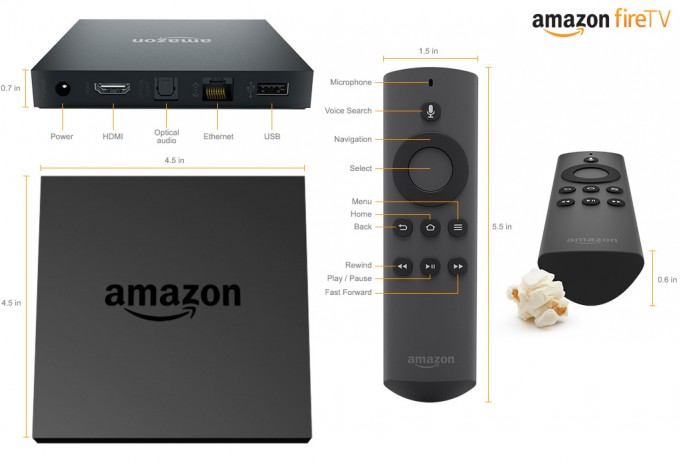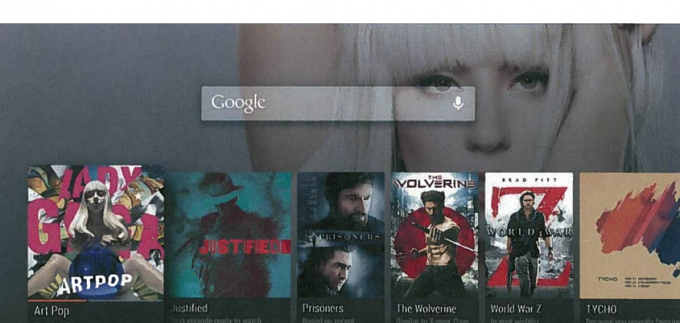Technological observatory March 31- April 6
This week's Technology Observatory brings you the following stories:
- Lenovo to use the Motorola brand to sell its products in Europe and the United States
- Telefónica buys EyeOS
- 4G now available from Yoigo in 220 towns and every province
- Apple looking to buy Renesas SP Drivers to improve the iPhone battery
- Telefónica to offer connectivity to Tesla vehicles in Europe
- Canonical shuts down Ubuntu One, its cloud storage service
- Amazon finally releases its own multimedia center, the Amazon Fire TV
- Important announcements about Windows 8.1, WP8.1 and other Microsoft #BUILD2014 products
- Android TV is here
Lenovo is a giant at the vanguard—or at least shares that position with Samsung—of major markets like China and India, but until now it had not really staked a claim in either Europe or the United States. The purchase of Motorola will smooth the way considerably if it decides to use that brand, instead of introducing its own name, but so far there's been no clear indication of what its plans might be. In a statement to the German publication Wirtschaftswoche, the company CEO hinted that the Chinese firm's intentions are to exploit the image and ground already gained by Motorola, which in recent months has seen its value soar thanks to the latest models produced under the supervision of Google: Moto X and Moto G. The idea seems to be that Lenovo will attack the market on every price front, from low end to high end. It certainly has plenty of material to play with, if you combine the Motorola and Lenovo catalogs, but how the two brands will coexist is still something of a mystery. What does seem to be clear is that Lenovo wants to exploit Motorola's name in Europe and the United States, using its own models to fill the gaps not covered by the formerly American company. Consequently, Lenovo looks set to create a complementary catalog featuring models from both brands. One possibility is that it might introduce a tag along the lines of “Motorola by Lenovo“ to gradually consolidate the name of the new offspring's parents or owners. Another is that the Motorola infrastructure might start selling affordable Lenovo cellphones in the markets where the Chinese firm currently has no foothold. In this respect, they already have some experience: their acquisition of IBM proved that the two brands could coexist side by side and gave enormous visibility to Lenovo, which now leads the PC market. While all this strategy is being defined, Motorola will remain part of Google until the authorities and regulators of the various markets give their seal of approval to the acquisition, which for the parties involved is already a done deal.

Telefónica has announced its acquisition of EyeOS in an operation designed to reinforce its cloud services portfolio and complement its strategy focused on developing open-standard technology solutions. The startup was founded in 2005 by Pau Garcia-Milá and Marc Cercós. For the last few years EyeOS has been experiencing considerable difficulties as a company—financially but also in terms of its focus and leadership—and its gamble on browser-based virtual desktops hasn't really paid off, meeting with resistance from both users and the corporate world. The project's founders moved on years ago to devote their energies to new enterprises (Garcia-Milá to Bananity, Cercós to Archy), and the sale of EyeOS looks like it might have been the only option left for a company that has run out of steam. According to its press release, Telefónica plans to offer it as a virtual desktop solution for the public sector:
"Virtual desktop infrastructure (VDI) offers considerable advantages to both users, who can access all of their company's legacy and cloud applications anywhere and from any device, and companies, as it enables them to efficiently manage and simplify access by their employees to information and applications.
Desktop virtualization is a sector which represents an important business opportunity within the cloud services segment. This value is characterized by the confluence of three important market trends: the increasing use of personal devices in the work environment (BYOD); the evolution of virtualization technology toward open standards; and HTML5 stack becoming the system used by different devices and environments to access all kinds of applications. Until 2012, just 13% of companies had moved to VDI."
The amount involved in the operation hasn't been disclosed.
In January we indicated that this might be on the cards, and today Yoigo confirmed that it now offers 4G coverage in every province in Spain, reaching 220 towns in total, or 48% of the country supported by the 1800 MHz band. Following a similar announcement from Vodafone, Yoigo has confirmed that it has speeded up deployment with regard to its initial plan, extending it not only to every town with more than 70,000 inhabitants but also to other important centers. In particular, it will reinforce towns in the Madrid region and coastal areas, of which the latest to be included are:
- Alicante: Albatera, Alcoy, Almoradí, Aspe, Calpe, El Campello, Crevillent, Denia, Ibi, Jijona, Mutxamel, Petrer, Pilar de la Horadada, Redován, San Juan, San Vicente, Santa Pola, Villajoyosa and Villena
- Cádiz: Arcos de la Frontera, Barbate, Los Barrios, Chipiona, Línea de la Concepción, Puerto Real and Sanlúcar de Barrameda
- Castellón: Almazora, Benicarló, Benicasim, Burriana, Onda, Vall d´Uixó, Villarreal and Vinarós
- Granada: Armilla
- Huelva: Ayamonte and Isla Cristina
- Balearic Islands: Manacor
- Madrid: El Álamo, Alpedrete, Camarma de Esteruelas, Ciempozuelos, Colmenar Viejo, Collado Mediano, Collado Villalba, Galapagar, Guadarrama, Humanes, Manzanares el Real, Moralzarzal, Morata de Tajuña, Navalcarnero, San Lorenzo de El Escorial, Villanueva de la Cañada and Villaviciosa de Odón
- Málaga: Alhaurín el Grande, Antequera, Benalmádena and Rincón de la Victoria
- Murcia: Abarán, Águilas, Alcantarilla, Cartagena, Cieza, Lorca, Molina de Segura and Santomera
- Seville: La Algaba, Dos Hermanas, Morón de la Frontera, Los Palacios y Villafranca and Utrera
- Valencia: Alacuás, Albal, Alboraya, Aldaia, Alfafar, Algemesí, Alzira, Benetússer, Burjassot, Foios, Godella, Manises, Meliana, Mislata, Oliva, Paiporta, Paterna, Picanya, Picassent, Puçol, Sedaví, Torrent, Vilamarxant and Xirivella
Apple is allegedly looking to improve the battery life of future iPhone models by acquiring Renesas SP Drivers. If the deal goes through, Apple could take advantage of the latter company's vast experience to increase not only the autonomy of its smartphones, but also the quality of its displays. According to reports in Nikkei Asian Review, Renesas SP Drivers is a joint venture between Renesas Electronics, Sharp and Powerchip. The acquisition would give Apple the 55% stake that currently belongs to Renesas and possibly the 25% owned by Sharp. The deal certainly makes sense when you consider that Apple would gain greater control over the development of fundamental components for its own devices: in addition to complete control over performance and architecture, it would be able to optimize production line costs down to the last cent, something very close to Tim Cook's heart and management style. iPhones currently use components from Renesas SP Drivers, one of Apple's authorized suppliers, and if there is one aspectthatreally calls for improvement it's their battery life.

The Tesla Model S reached Europe's roads at the end of 2013. Dubbed "the safest car in the world" by the NHTSA, it not only oozes luxury and innovative technology but is the electric car with the longest range. Now Telefónica and Tesla have announced a deal whereby the telecommunications operator will provide M2M (machine to machine) connectivity for the vehicle in the main European countries. This connectivity will allow the Model S to use Tesla's industry-leader infotainment system—regarded the best of its type—which offers the driver and passengers a truly exceptional multimedia entertainment service, including online music and Internet access, as well as features like a navigation system, designed to enhance the driving experience, and a generous 17-inch touchscreen built into the Model S dashboard. Thanks to Telefónica's M2M solution, these cars will also be connected to the Tesla service that informs users about the vehicle's status and performance and issues alerts about possible failures. The agreement makes Telefónica the principal European technology partner for Tesla in terms of connectivity in its vehicles, and of course constant connection to the infotainment platform of the world's best-known electric car manufacturer will substantially improve the driving experience.

It looks like Canonical's experiment in offering the public its own cloud storage solution hasn't had the desired effect, judging from an announcement in the company's official blog regarding the shutdown of Ubuntu One on June 1. Why? In its own words, to focus on what they do best: developing a premium operating system and premium tools for computers, tablets and smartphones. Competition in the cloud-based file storage and synchronization services sector has been extremely fierce: apart from the undeniable leadership of Dropbox, other services like Google Drive offer vast storage capacity at rock-bottom prices, which means widespread adoption and many more customers "stolen" from competitor services. Improving its service and gaining more users would have been an uphill struggle for Ubuntu One. More importantly, it would have required vast injections of funds from Canonical, which the company was reluctant to do, preferring instead to take better advantage of its more popular in-house products like Ubuntu and forge ahead with its Ubuntu Phone. Despite the June 1 shutdown, Ubuntu One users will have until July 31 to back up any files stored on the platform. After that though, Canonical will delete the whole lot.
Amazon has finally released its own multimedia center, the Amazon Fire TV. Connected to your TV's HDMI and controlled remotely, this small device will let you watch movies and access other multimedia content.

The multimedia center comes with quite an array of built-in features. Inside it has a quad-core processor with a dedicated GPU. As for RAM memory, it comes with 2GB to deliver speed and fluidity. These features are sure to make menu navigation a delight. Regarding picture quality, we're talking of 1080p resolution accompanied by Dolby Digital Surround sound. “It's three times more powerful than an Apple TV“, which is fierce competition. The Internet connection for downloading the multimedia content you want to watch will be via WiFi with a dual antenna and MIMO connectivity, guaranteeing an optimum download speed. I want my movie and I want it now! The operating system is an Android fork, like the kind found in Amazon's Kindle Fire tablets, which means that all multimedia content will have to be downloaded from the Amazon store. Here's a list of specifications for the Amazon FireTV:
- Quad-core Qualcomm Snapdragon 8064 processor
- Dedicated Qualcomm Adreno 320 GPU
- 2GB RAM
- 8GB internal storage plus Amazon cloud storage
- Video formats: H.263, H.264, MPEG4-SP, VC1
- Audio formats: AAC, AC-3, E-AC-3, HE-A, PCM, MP3
- Image formats: JPG and PNG
- DualBand WiFi connectivity and MIMO technology
- Bluetooth 4.0
- Image resolution Full HD 1080p and 720p up to 60fps
- Dolby Surround sound
- Size: 115 mm x 115 mm x 17.5 mm
- Weight: 281 g
- 3.5mm Jack and USB 2.0 ports
There's no doubt that as far as features go, this has to be one of the best multimedia centers on the market. The content is also fairly varied, ranging from movies and series to football matches and something greatly desired by many of you out there: videogames. Some of the applications supported include Netflix, Hulu, WatchESPN, MLB, Crackle, MLB, Vimeo, iMDB, NBA and YouTube, as well as others yet to be announced. With regard to music, you'll have Pandora, iHeartRadio, TuneIn and, of course, all the music you buy through Amazon. These services are not currently available but they should be by next month. You'll be able to control the Amazon FireTV via the same remote, either by pushing the buttons or giving it voice commands, because it comes with a microphone and voice recognition. Amazing! We've already seen the Amazon Fire TV's built-in features and we've talked about the possibility of playing video games on it, but how? Well, the answer is, with a special game controller that you'll be able to connect to your multimedia center. This means that you'll be able to play the vast number of video games currently available at the Amazon app store. There is one drawback, however, which is that if you want to use this gaming controller, you'll have to fork out $39. Not that expensive, really, when you consider it's an Android-based multimedia center that acts like a game console. Everyone knows how expensive Android-based games are—in fact, some of them are prohibitively priced—so I don't think having to pay $39 to play is that crazy, especially as the Amazon Fire TV is ridiculously cheap for the specifications it offers. Besides, judging from the developers that are backing the Amazon Fire TV we can expect some great new games in the near future. Disney, Gameloft, EA, Sega, Ubisoft and Double Fine are all on board. The Amazon Fire TV is available as from today and retails at the very affordable price of $99. With such value for money, this is nothing short of a direct attack on all the other multimedia centers on the market. Unfortunately, we know that it's already on the shelves for purchase in the United States but we don't know when it will reach Spain. Looking at the services it offers, like Netflix, I don't think it's going to be any time soon.
On the first day of the Microsoft BUILD 2014 Developer Conference several important novelties were unveiled. Here they are:
The Start button and menu are back in Windows 8.1
The much-loved Start button and, more importantly, the Start menu that will appear when you click that button, letting you access your programs installed in Windows and your favorite folders (Music, Pictures, Downloads, etc.), will be resurrected in Windows 8.1 as from April 8. Naturally, they've evolved, but they're just as easy to use and they integrate perfectly with the Windows 8 Metro interface they are designed to enrich (applications can even be anchored to the menu using Metro icons). More information:
Windows Phone 8.1
In addition to the official announcement of the Windows Phone 8.1 release, the new version of the operating system for Microsoft cellphones that will be unveiled in the coming weeks (as an upgrade and preinstalled in new devices), some fairly specific novelties were shown: improvements in the battery and data consumption management tools (WiFi, Data and Battery Power Sense), a Swype-style keyboard that lets you type by sliding your finger from one key to the next, a notification center, a new start screen that lets you set your own background photo or picture and turn it into tiles, enhanced performance in low-end devices, a new unlock screen, IE11 and Cortana… More information
Cortana, the virtual assistant of Windows Phone 8.1
Cortana is what Google Now is to Android and Siri to iOS. It's a virtual assistant that lets you give voice commands to speed up specific tasks (searching contacts, writing messages, creating reminders, scheduling appointments, looking for places with FourSquare, etc.) and make web searches (more like Google Now, obviously, with Bing replacing Google). More information:
For developers: multiplatform applications
Universal Windows apps is how the new applications in the Windows "ecosystem" are known. The really brilliant thing about this is that users will be able to enjoy the same applications on multiple devices, optimized for each display, and will only have to pay once to do so. Developers' creations will be facilitated because the code used to develop apps for a specific device will work on any "other Windows" (including Xbox One with Kinect). More information:
Windows free on devices with screens under 9 inches
Tablets, smartphones, netbooks, smartwatches and any other device with a 9-inch screen or less might now come with Windows (and/or its respective development tools) preinstalled free of charge. What does this mean? Better prices in devices with Windows preinstalled, better equipment to choose from, more apps, greater compatibility between devices, etc. More information
Wearables from Microsoft and its Internet of Things
Although Samsung, Google, Sony and other firms have already made their first forays into the wearables market, especially in the case of smartwatches, Microsoft is hot on their heels and is already starting to promote its vision of the Internet of Things, represented in the inclusion of its software and in the documentation (WindowsOfDevices.com) for major developments. More information:
Internet Explorer 11 for cellphones
There were several announcements about improvements in speed, rendering and functions for desktop devices in companies, but more important is their appearance in Windows Phone 8.1, and in the best way possible: offering compatibility with the latest standards, page compression to maximize loading speed (Chrome-style), and a user experience unified with the desktop version. More information:
Novelties in Skype for Windows 8.1 and Windows Phone 8.1
The novelties in Windows 8.1 are related to greater quality in video calls and better integration with the Metro interface (including notifications and contact access). The great news is the new Skype app that will be released with Windows Phone 8.1, which will include features like useful integration with Cortana for making quick video calls and a function for transferring a conventional call instantaneously to Skype video call mode. More information:
Nokia Lumia 930, 635 and 630
What many of us were waiting for: the first Lumias following Microsoft's acquisition of Nokia's mobile device division. There are three cell phones: a high-end device, the Nokia Lumia 930, (5-inch display, quad-core Snapdragon processor 2.2 GHz, a 20 MP camera and resolution 1920 x 1080 are just some of the specifications) and two medium-range devices, the 630 and the 635, whose only difference is their connectivity (the former, 3G only; the latter, double SIM and LTE). More information:

We know how it started and what happened next in Google's adventurous attempt to get into the smart TV world with its Google TV and then its Nexus Q: utter failure in both cases. It's not that the smart TV platform is that great, as there already umpteen different operating systems out there (Samsung, Sony, LG, each in its own way). But now it seems there's a new contender. Android TV has just arrived on the scene. We have just found out that Google is about to unveil a new device called Android TV. It might sound pretty similar to the big G's previous adventure with its thwarted Google TV, but in fact it couldn't be more different. This is no vain attempt to turn our large living-room screens into an elongated phone. Not in the least. It's a fully adapted platform for home entertainment, just like Android Wear, and will come with the brand's own set-top box. Apparently, Android TV will have a lot in common with other options we're already becoming familiar with as they try to carve out a niche in the market: Apple TV, Amazon Fire TV and Roku. This time Google has been less ambitious and more minimalist because, as reported in The Verge, they're asking developers to create extremely simple apps for an equally simple set-top-box interface. It remains to be seen what tools Google will provide for rescaling these apps to such large screens. Besides, they'll not only have an Android heart but will also function in a very similar way to Google Now, with "cards" representing movies, programs, apps and games, all highly visual and easy to use. The device will support two different control functions: remote control with a directional pad (four-way) and voice control. It will also support notifications (though Google prefers to reserve these for very limited cases). The result will be very similar to the newly released Amazon Fire TV. The new Android-based set-top box will also feature recommendations, very much in the style of all the latest Google programs. Of course, you'll be able to choose what you want to use—apps, games, movies or series—but the ultimate aim of the big G is to make direct recommendations, including the possibility of continuing to watch your movie/series, use your app or play your game on your smartphone or tablet if you get tired of doing it on the big screen. Meanwhile, Google has really played up the simplicity of the interface, repeating over and over again that it should never take more than three clicks to go from the homescreen to enjoying your chosen content. Even searches should be secondary as the intuitivity of the entire ecosystem will be designed to let you you find what you're looking for as fast as possible. And in addition to the universal search function, it will also be possible to make searches within individual apps. All of this begs a few questions. What's to become of Chromecast? Is Google willing to compete with its own partners like LG and its WebOS or Samsung and Sony with their respective ecosystems for smart TVs? For the moment, all we can do is wait and see how things develop and whether this time Google is on to a winner: the Android ecosystem is robust and very widespread, but the current competition is very fierce. Will it outperform other platforms like Apple TV, Roku or newcomer Amazon Fire TV?
